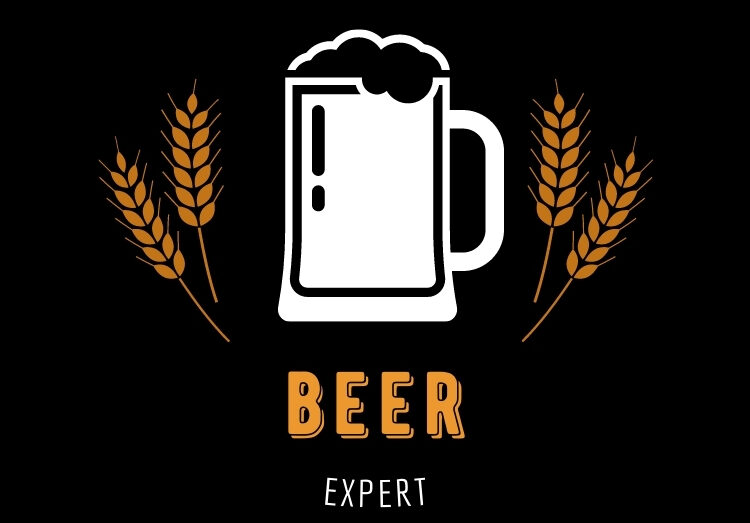The colour of the glass can make all the difference between whether beer poured from the bottle is fresh tasting or ‘skunky’ – and also whether it sells in big numbers.
Beer and Light
Beer does not respond well to light and exposure to its invasive rays can lead to the flavour and aroma being spoilt.
The sensitivity to the light is caused by the hops in the beer. Being struck by visible or ultraviolet light causes the riboflavin (a B vitamin produced by yeast during fermentation) in beer to react and degrade alpha acids present in the hops to create an unpleasantly bitter chemical compound known as MBT. Beer spoilt in this manner is sometimes referred to as being ‘skunked’ because MBT is very similar to the musky chemicals skunks spray at unwelcome visitors.
Colour Protection
When beer is stored in bottles the colour of the glass can have a effect in reducing the harmful effects of light on the beer.
Amber/brown-coloured glass is widely recognised as the most effective at preventing the passage of light at the wavelengths where chemical reactions occur, and as such has been the long favoured choice for brewers keen for their beer to last as long as possible in an agreeable condition. With this in mind it may be surprising that, despite offering considerably poorer protection from the harmful effects of light, bottles made of green and clear glass are favoured by some major brewers.
If the prevention of light damage was the sole reason for choosing beer bottle colour then all bottles would no doubt be amber coloured. Or rather if packaging choice was solely concerned with the harmful effects of the light then beer wouldn’t be sold in bottles at all, but rather cans. But some brewers instead choose to compromise the quality of their beer by using green or clear bottles for their product for the reason that these colours are more distinctive and marketable than amber.
Green = Beer of Quality
Time spent in the heady and liberating world of New York’s advertising and marketing sector proved a revelation to one Alfred ‘Freddy’ Heineken. Upon return to the rather more staid environment of the Netherlands he proposed the eccentric idea of exporting his Heineken beer in green bottles rather than the traditional brown, with the reasoning being that he wanted the firm to “sell distinction”.
His outlandish idea worked. With their distinctive look, ‘export’ label and a higher price, Heineken cultivated a highly marketable ‘premium’ brand. The fact that the beer itself wasn’t particularly remarkable was irrelevant; as long it was clean and pleasant tasting the average undescerning consumer would be willing to believe a beer’s claims on high standards. The effect of this marketing masterstroke was that this unusual green beer bottle became synonymous with a perceived “quality European beer”, and as such was successfully used by other brewers to market their beers as premium beers.
Marketability of Green
As as result of Heineken’s bright idea, bottle colour now plays a crucial role in selling beer to the masses, and not merely in convincing people of the quality and justifiable expense of ‘foreign beer’. With Dutch brands Grolsch and Heineken and German brands like Beck’s and Jever selling their beer in green bottles in their homelands, choice of glass colour has now become simly a matter of creating a distinct and attractive brand in a market saturated by beers that, as far as most palates are concerned, don’t taste all that much different from one another.
From an aesthetic standpoint green and clear ‘flint’ glass are recognised to be much more appealing to the eye. Clear glass is believed to suggest a lighter and even a more sophisticated drink, and it is also better for showing off the colour and texture of the beer itself. What’s more it’s cheaper to produce.
But surely the advantages of using clear and green glass from a marketing and cost standpoint are somewhat undermined if the beer has a tendency to smell like a skunk?
Skunk Preference and Workarounds
This has not proven to be the case. Many drinkers mistakenly assume that the light-struck flavour and aroma of exported Heineken, for example, is actually intentional, and that of a ‘quality beer’. They have even got used to light-struck beer to the extent where they prefer the types of beer commonly found in green and clear bottles – such as Grolsch, Stella Artois, Beck’s and Jever – because they are commonly found to have an accompanying skunked flavour.
Brewers obviously cannot rely on all consumers being so compliant and have sought out workaround to prevent their beers being light-struck. For instance, instead of using natural hops to bitter the beer, some brewers use a chemically modified form of hop extract that does not produce MBT when struck by the light.
